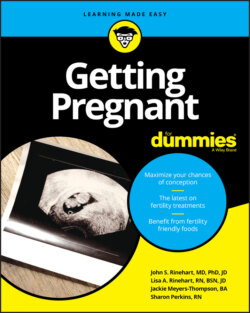Читать книгу Getting Pregnant For Dummies - Sharon Perkins - Страница 39
The eggs
ОглавлениеYou may wonder what eggs contain to make them into your potential screaming newborn. The answer is chromosomes — 23 chromosomes, to be exact. Each chromosome contains the genes that determine whether your baby is tall or short, blond or brunette, and, to some extent, fat or thin. The egg also contains considerable machinery necessary to mix the male and female chromosomes and then divide the chromosomes into the correct number for each daughter cell that results from the first cell division that the fertilized egg undergoes.
Of course, there’s more to an egg than chromosomes. Three protective layers surround the egg, starting with the cumulus layer. That’s the nourishing and protecting fluffy layers of cells that completely surround the egg. Moving inward, you’ll see the corona radiate, the protective single layer of cells covering the zona pellucida, the “shell” of the egg. A mature, ready-for-fertilization oocyte, or egg, has a small attachment called a polar body, which is the remnant left after the egg divides (a process called meiosis) so that it contains only 23 chromosomes. The polar body also contains 23 chromosomes.
All cells in the human body besides eggs and sperm have 46 chromosomes. Eggs and sperm each have 23, so the baby they create has 46.
Each month, one egg is released from one of your ovaries. The decision about which one ovulates (right or left) is random; they do not necessarily alternate. If you have only one ovary, either because you were born that way or because one was surgically removed, your one ovary generally takes over egg making each month so that you still ovulate each month.
